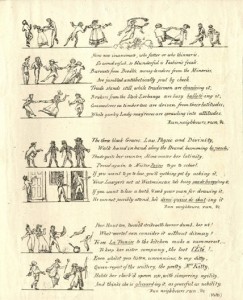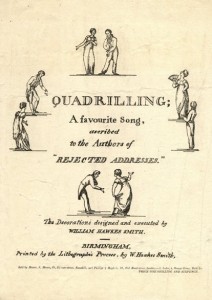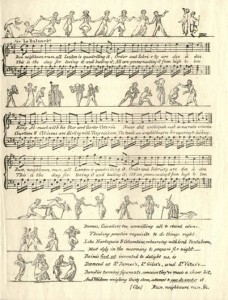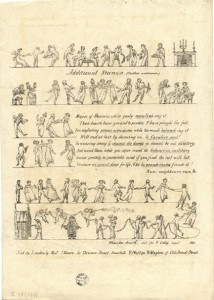This music-sheet kept among Douce’s prints on dancing is not just an example of popular music in the age of bonnets, but also a clever and mildly amusing satire on contemporary mores:
Under the title Quadrille; a favourite song, the author has recourse to the conventions of the music-sheet for comic effect. By referring to the quadrille craze that took London by storm around the date of the publication of Thomas Wilson’s The Quadrille Instructor (1817), to which he alludes in his verses, Hawkes Smith ridicules a society in which ‘Order and Sobriety are dos à dos’ (an opinion that Douce surely shared):
Kings and kitchen maids, baronets and tradesmen, lawyers and soldiers dance betweeen the staves:
 The satire is, however, rather good-natured, and the song concludes with a chain of gallant soldiers and pretty maidens dancing towards the church among garlands and cupids -it is almost like the happy ending of a Jane Austen adaptation:
The satire is, however, rather good-natured, and the song concludes with a chain of gallant soldiers and pretty maidens dancing towards the church among garlands and cupids -it is almost like the happy ending of a Jane Austen adaptation:
The addition of a cheerful final stanza to his satire shows how commercially savvy William Hawkes Smith was. Such impression is reinforced by his use of lithography, a technique that allowed the Birmingham-based printmaker to print simultaneously music, illustrations and text; by 1821, lithography was probably as fashionable as the quadrille. Moreover, in his British Music Publishers, Printers, and Engravers (London, 1900?), Frank Kidson mentions another sheet song by Hawkes Smith entitled Washing Day; a proper new ballad for wet weather published in the same years; in the late nineteenth-century it was re-issued to advertise soap:



